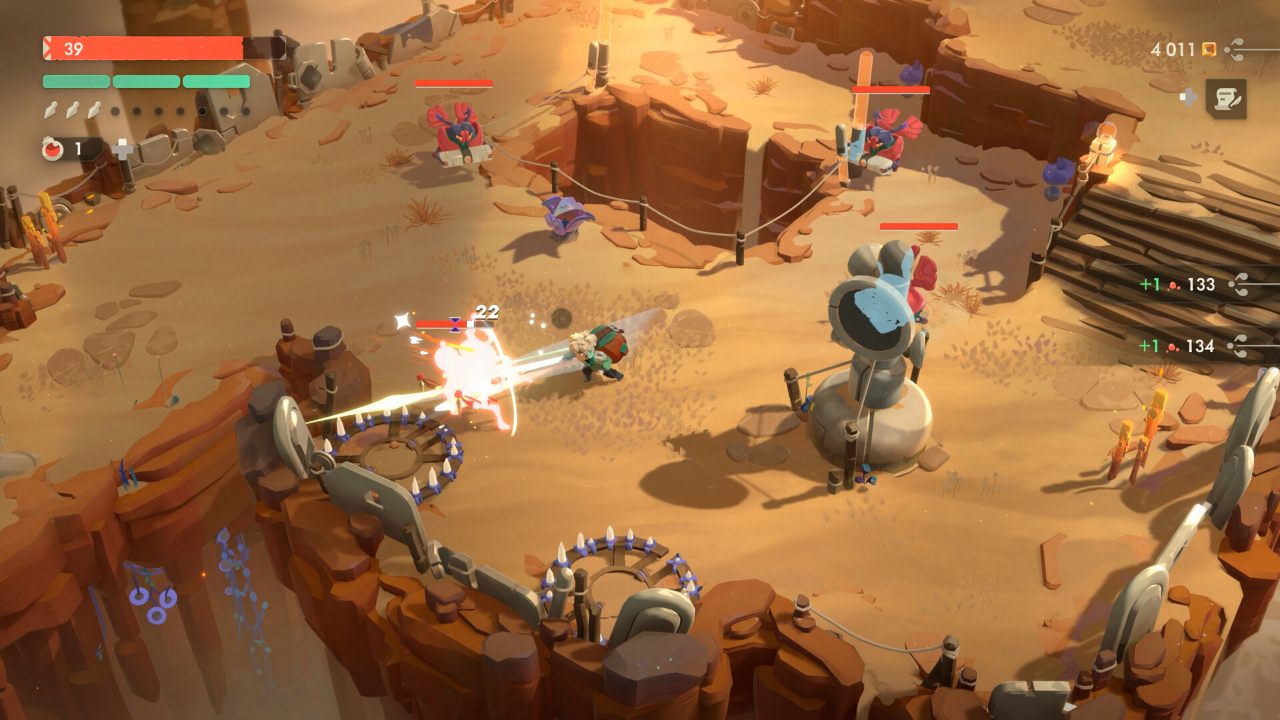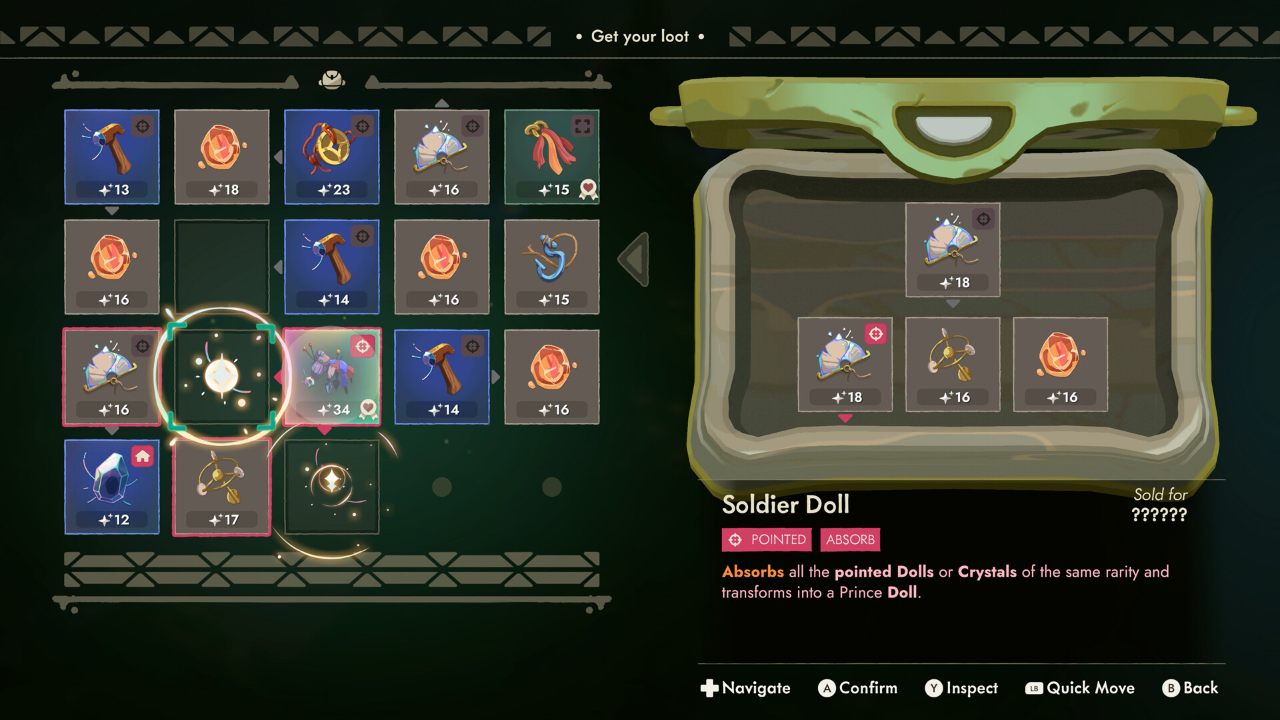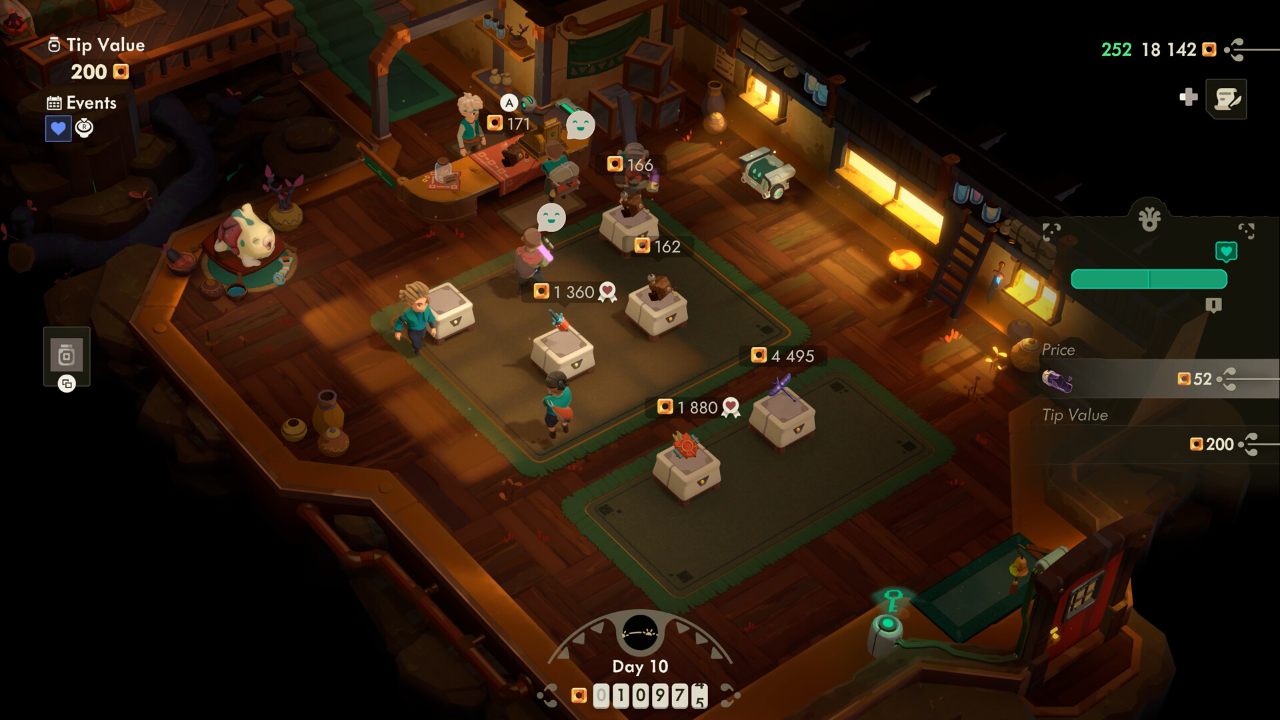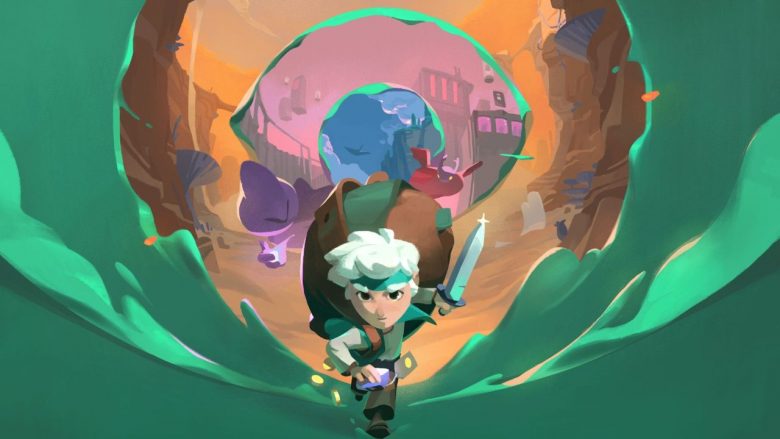The original Moonlighter always felt more like a proof of concept than a full game to me. The idea of a shopkeeper who moonlights as an adventurer and sells the loot he steals from deadly dungeons was novel, but in execution much of Moonlighter felt clunky. Combat was slow and imprecise, making the difficulty feel too steep, and the pixel art graphics, while pretty, evoked memories of frankly better games. In Moonlighter 2: The Endless Vault, almost every aspect has been overhauled and improved upon, to create an accessible, gorgeous iteration of the original model.
Entering early access, Moonlighter 2 already feels complete, up until you come across a big “COMING SOON” tag on certain features. Having spent several hours with it, I can’t imagine there’s much that needs adding, which is fairly exciting in itself.
Continuing the story of Will the Merchant, The Endless Vault sees you deposited in the town of Tresna with your friends Tomo and Zenon, after your village of Rykona was taken over by a force of darkness. With no way home, you’re given a chance by the titular Vault, a sentient entity that promises to grant a wish if you feed it enough gold. With that smoke motivation, you’re given a shop to run by local entrepreneur Ms Scratch, and told to get on with earning.

Thankfully, the Vault counts money you earn and not money you have, and so you can spend your cash on upgrades to your potions, armour, weapons, and the shop itself. Each upgrade requires both money and its own currency, meaning you’ll need to explore the dangerous words outside Tresna to progress. Of course, you’ll need to venture out anyway in order to bring back all that lovely loot in the form of Relics.
Presented as an isometric roguelike similar in form to Motion Twin’s Windblown, Moonlighter 2: The Endless leads you through small arenas filled with enemies and traps, and allows you to forge your own path through from entrance to boss by choosing potential rewards. It’s nothing new since Hades and Curse of the Dead Gods, but is it’s an effective system that gives you some control over the random nature of buffs and rewards.

In the first biome you’ll find certain rooms that buff you with fire or earth damage, while later there’s shock and other elemental effects to find and experiment with. Some boons will give you extra potions, or increase your damage, while you can come across town blacksmith Andrei who’ll boost your gear stats for the run, or a pair of wanderers who will issue challenges for various rewards.
A set of four weapon types gives you some diversity in your approach to combat. The normal sword has decent damage and a whirlwind attack, the large sword is slower and more powerful and slowly grows gains sharpness as you attack; the spear has deadly forward thrusts and drops spearheads on the ground, which can be recalled with a press of the special button and damage enemies in their path. Finally the gauntlets deliver super-fast combos to single enemies. Factor in the gun for ranged attacks and a powerful satchel strike that launches staggered enemies and the combat feels much deeper than the previous game. There’s so much going on in the adventuring portion that it feels like a complete game on its own, before you factor in the shopkeeping element.
Most rooms reward you with a chest containing Relics of various quality and value. You have limited room in Will’s backpack, so you’ll need to pick the most lucrative options to take home. Some are cursed, though, and will have multiple effects on other Relics you store them with. In the first biome, some Relics can even burn others to ash, sometimes conveying new properties on themselves or the remaining haul in the process. It becomes a mini game to simply manage your inventory, using curses to increase value or bestow armour onto Relics that protect them from future curses. Each Relic has a “Rarity” level beyond the colour-coded quality, which multiplies its value when you sell it later.

Managing the shop is yet another mini-game-style component, but one that offers a busy, yet more wholesome, distraction from adventuring. Here you have four plinths (initially), upon which to display Relics. You set the price and open the shop, and watch as the townsfolk and outsiders alike come in and browse your wares. There are four levels of customer satisfaction, which are dictated entirely by price in the early hours.
Price too high and they’ll shake their heads and leave, but if you price it right they’ll buy it. The more happy customers you get, the higher your tip jar will grow, which rewards you a bonus at the end of the shift. It can be super frustrating to price something you think is high only to find out you undersold yourself and lost money. Likewise, it can be annoying when you keep lowering the price of an item and no one will buy it. On certain days, named characters will visit, and if you can sell them a good deal, you’ll receive massive bonuses.

Later you can buy decorations and extra items from various townsfolk, which improve customer mood and can help increase your prices. Likewise, you get boosts from K33P3R, the loveable little robot who will offer you the choice of three perks when you clear certain milestones during a shift. Just like when adventuring these perks have various buffs and debuffs, like increasing prices by 5% or adjusting Common prices down and Uncommon prices up, or even chucking a flat boost into your tips jar.
Despite some framerate jitters, Moonlighter 2: The Endless Vault feels very polished for an early access title, and offers a ton of content to get stuck into already – with more promised. This is a massive improvement on the original, which delivers a ton more features, story, and gameplay while retaining the same core premise. If this is the level of quality straight out of the early access gate, I can’t wait to see what Digital Sun sells us when it’s ready to hit 1.0.
Moonlighter 2: The Endless Vault is coming to PC via Steam on November 19th.






